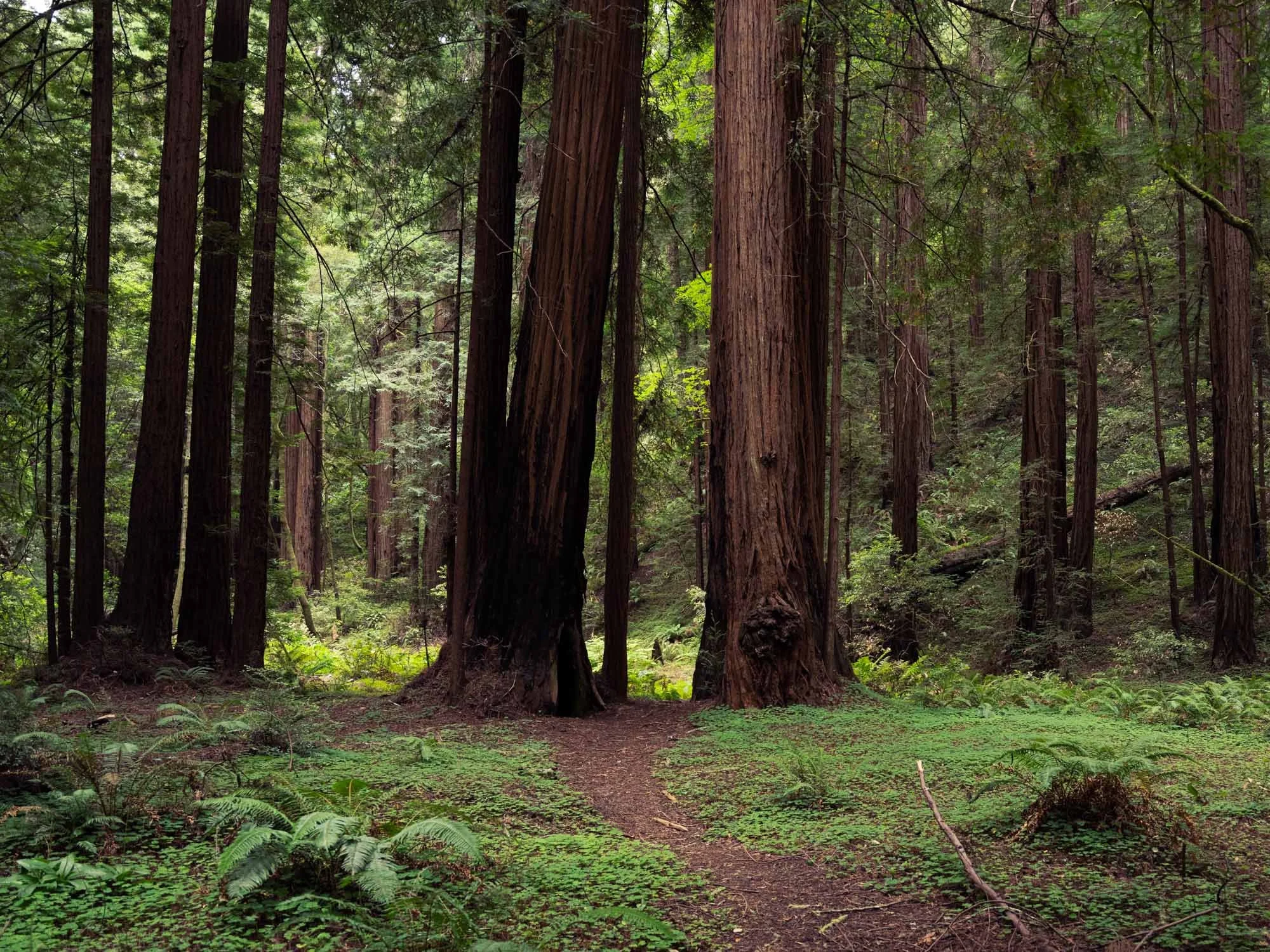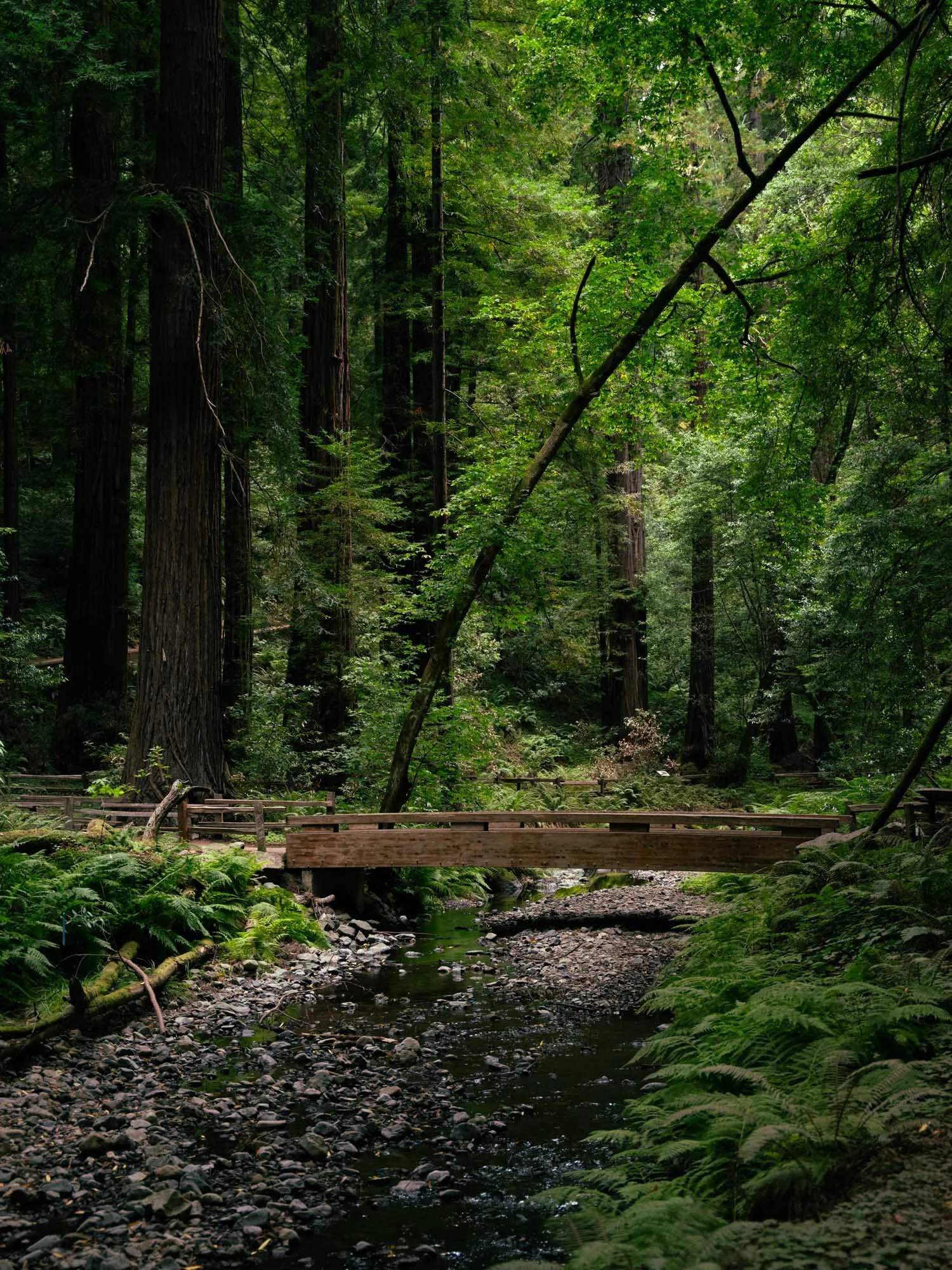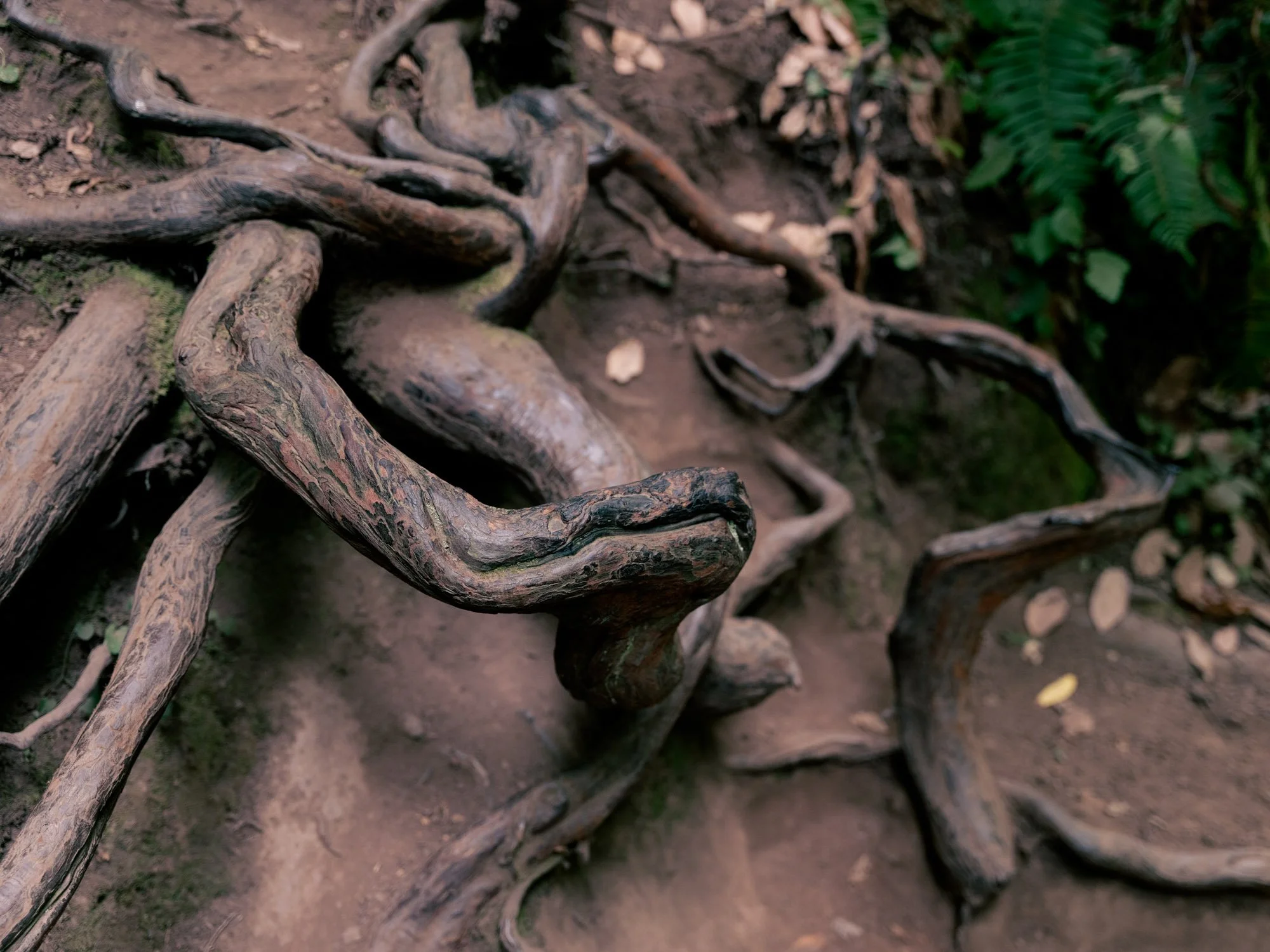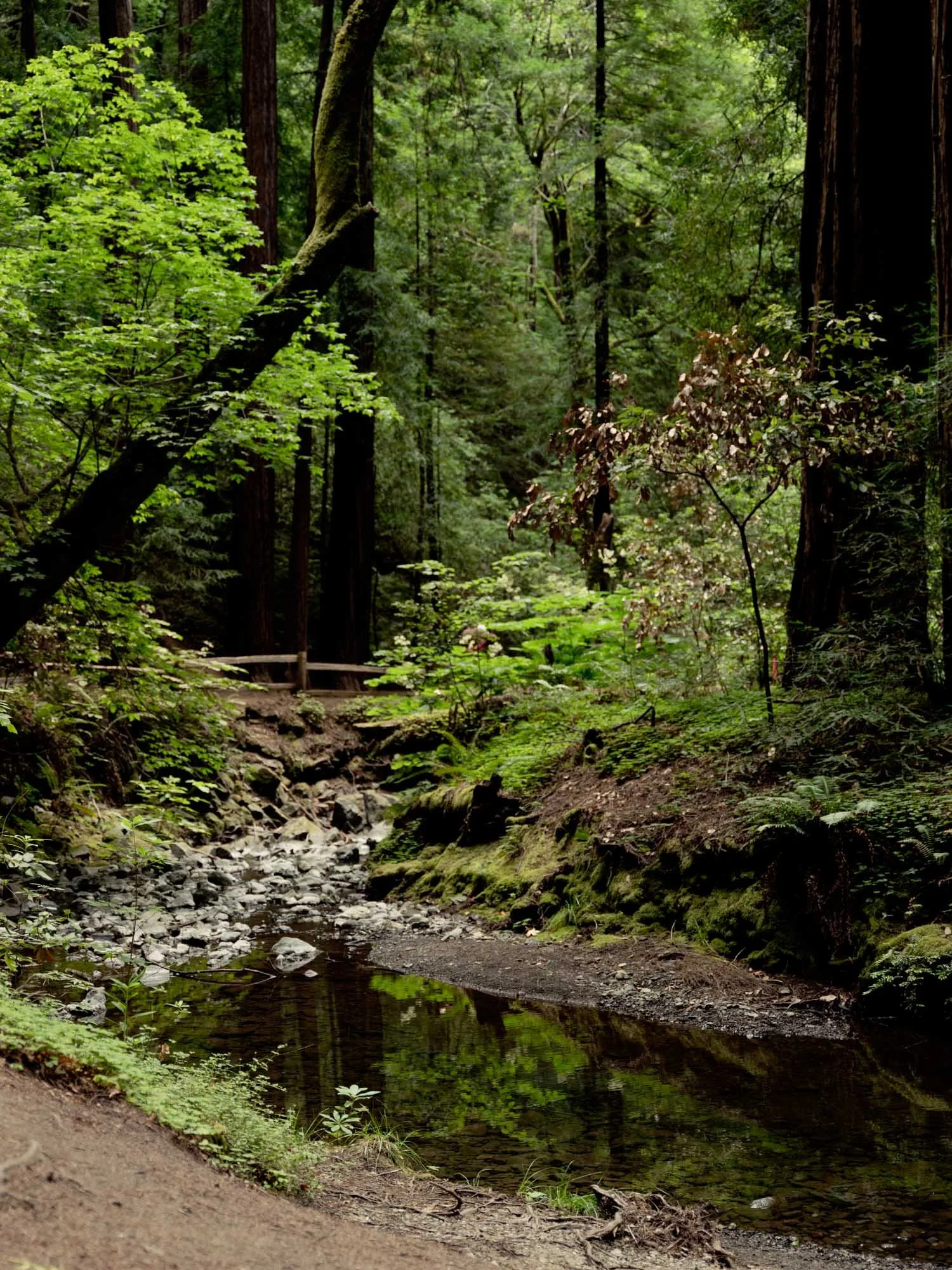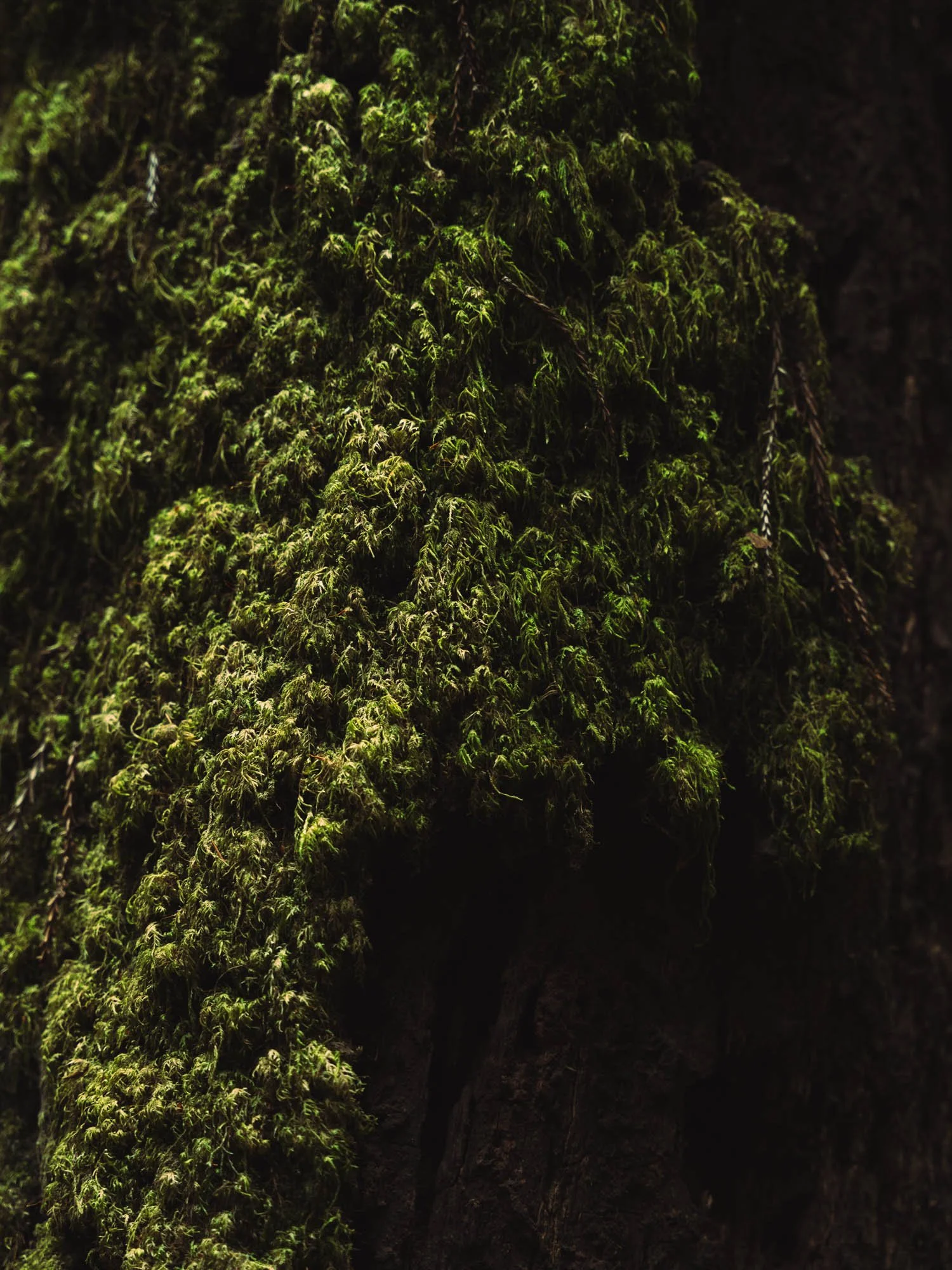Muir Woods National Monument - A walk among ancient redwoods
We’re excited to share our recent visit to the Muir Woods national monument in Aug’25.
The coast redwoods forest is about 15 miles north of San Francisco, located in Marin county. Although the travel distance is s
hort from the city, allow extra time as the final miles have winding roads and poor visibility, especially if it’s foggy.
Muir Woods is an ancient forest predominantly composed of coast redwood trees, which are among the tallest in the world, named in honor of writer John Muir—often called the "Father of the National Parks". He also played a vital role in establishing the famous Yosemite and Sequoia National Parks in California.
Muir Woods is part of Golden Gate National Recreation area which includes other popular landmarks such as Alcatraz Island and the Presidio of San Francisco.
Over 1 million people visit the forest each year. To control visitor traffic, protect the forest, and ensure a better experience for everyone, a reservation system is required for vehicles and shuttles. Information about reservations can be found on the website www.gomuirwoods.com.
There is restroom facility before proceeding to the entrance ticket counter and another after you enter the forest around Bridge 1. There’s usually no cell phone service inside the forest.
Many of the trees in this tranquil forest are over 500 years old. Cathedral Grove is a peaceful spot with a good number of massive old trees. It’s a magical feeling to stand and admire these towering trees that have stood for centuries withstanding all the changes. The tallest trees grow around the Redwood creek. Winding its way through the forest, Redwood Creek runs alongside the boardwalk from the forest entrance to Bridge 4.
Some of the fauna & flora we saw in this forest during our walk in the paved section from entrance to Bridge 4 are
Coast Redwood : Towering trees that can grow over 300 feet tall found along the coasts of Oregon and California.
California Bay: An evergreen tree with aromatic leaves, commonly found growing near redwood trees.
California Hedgenettle: A herb producing lavender-pink tubular flowers in spring and summer. Despite its name, this plant does sting like true nettles , as it belongs to the mint family.
Tanoak: Can grow over 25 feet tall and produces acorns that resemble those of oaks.
California Spikenard: A tall herb that can grow up to 10 feet and produces purple berries that songbirds love to eat.
Redwood Sorrel: Low-growing herbs carpeting the floor next to the redwoods. The plant has three heart-shaped leaflets that resemble clover.
Western Sword Fern: An evergreen fern with long, sword shaped fronds that can grow over 3 feet.
Arctic Butterbur: A herbaceous plant in the aster family that produces large, broad leaves—over 1 foot wide—in spring .
Horsetail: These vascular plants reproduce through spores rather than seeds similar to ferns.
While walking in the paved section we saw or heard some interesting birdsongs as well:
Pacific-slope Flycatcher: Heard its distinctive call high in the canopy, often rising above the hum of foot traffic along the trail.
Band-tailed Pigeon: Detected the low, cooing sounds, which often perches quietly in the higher branches.
Chestnut-backed Chickadee: Noticed its lively calls and quick movements among the foliage.
Pine Siskin: Noticed their sharp chittering calls.
Pacific Wren: Watched as it moved through low-growing plants, searching for insects and spiders. Males are known for adapting their song patterns to be heard over ambient forest noise.
Coho Salmon: Spotted in Redwood Creek, where juveniles mature before migrating to the ocean. Thanks to a five-year restoration project focusing on creekside vegetation and gravels, salmon numbers have increased. Small flags along the creek mark new plants introduced during the project.
Muir Woods offers a rewarding experience even for those who prefer not to do much hiking. Nature lovers fascinated by flora and fauna can enjoy a wonderful, inspirational trip simply by strolling along the paved paths. Bird enthusiasts might find that identifying species by sight is challenging—many birds remain hidden in the tall canopy or the dense ground cover, and foot traffic can add to the difficulty. For this reason, tuning in to the distinctive calls and songs of the birds is often the best way to spot more species.
Roots of redwoods
Redwood Creek

